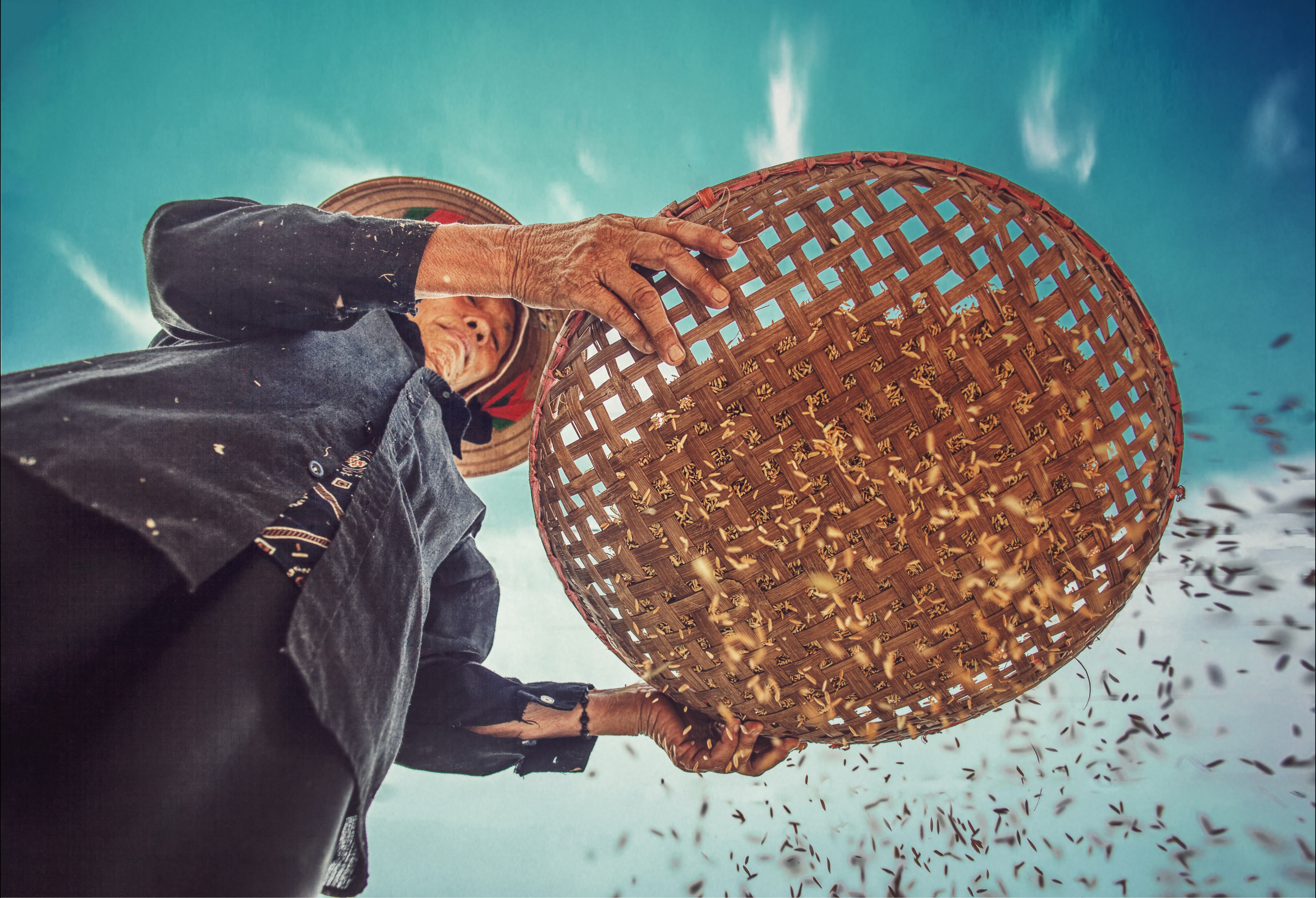Share This
Most of the food we eat comes from annual plants, which are replanted from scratch each and every year. With such a short period to establish an underground root network, these thirsty crops rely on irrigation and herbicides to survive.
The Land Institute, a Kansas-based nonprofit, aims to change this approach by igniting a global movement for perennial agriculture. Unlike annuals, perennial crops are planted once and then reharvested season after season. This helps the plant develop a stronger, more robust root network which can help support healthier soils and potentially be more drought-resistant in the face of an unpredictable climate. Additionally, a move from annuals to perennials would ease the burden of the farmers working hard to grow our food, since they would not be replanting each and every year.
Thus far, three staple grains are showing promise in their journey toward perennialization. Today, we’re updating you on where things stand with perennial wheatgrass, rice, and sorghum.
Perennial Wheatgrass
Kernza®, a perennial wheatgrass crop that is a distant cousin of annual wheat, has been the biggest success story in the perennial grain journey to date, and is the first commercialized perennial grain. Kernza® is commercially available in products from Cascadian Farm and Patagonia Provisions, as well as in products from other sustainably-minded food purveyors. Today, it is still only grown on approximately 4,000 acres around the world. Breeders are continuing to work on optimizing the crop to improve yields and offer more diverse varieties suited for different end uses, as well as creating perennial versions of annual wheat (not just wheatgrass). As consumer interest in sustainability increases, we expect to see adoption of Kernza® continue to grow.
Perennial Rice
Rice is the most important staple food for more than half of the people around the world, especially in Asia. It is typically planted once each year, then ratooned (or cut back) to squeeze in a second, weaker growing season during the year, which requires a substantial amount of physical labor and resources. Over the past two decades, crop scientists at The Land Institute have been conducting field tests using traditional breeding methods (interspecific hybridization, not genetic modification) to see if they could develop a perennial rice that wouldn’t need to be replanted so often and could potentially offer environmental benefits as well.
In a November 2022 article in Nature Sustainability, researchers confirmed that “after more than 20 years of effort, the cultivation of [perennial rice] has become a reality,” and that this perennial rice “has received certification for commercialization due to the multifaceted benefits it brings.” This rice can be harvested over 8 growing seasons (4 consecutive years) with comparable yields to conventional rice. The savings of both time and labor is rapidly gaining favor among local farmers. In 2021 alone, perennial rice was grown on more than 15,500 hectares in Southern China. It remains to be seen when and where perennial rice will show up on the retail market, but we can imagine that it won’t be long now.
Perennial Sorghum
Sorghum is an ancient grain with a rich history in the cuisines of Africa. As an annual crop, it is typically planted and harvested once per year, meaning that efforts to perennialize sorghum could have a substantial impact on growers. Under the direction of the Land Institute, development of perennial sorghum has been underway for years throughout Kansas, Texas, and Georgia in the US, as well as in Uganda, Mali, China, Indonesia, and Italy. The project shows promise, but because it is not quite as far along as perennial rice or wheat, it is not yet ready to commercialize. In a 2018 update published in Sustainability, project leaders confirmed that “breeding will continue, aimed at simultaneously increasing the frequencies of gene complexes conferring perenniality and those conferring high productivity and improved human-food quality.”
Even grown annually, whole grains are already some of the most sustainable foods available. With more and more perennial options on the horizon, whole grains are poised to become an even more important part of an environmentally-friendly diet. (Kelly)
To have our Oldways Whole Grains Council blog posts (and more whole grain bonus content!) delivered to your inbox, sign up for our monthly email newsletter, called Just Ask for Whole Grains.


Add a Comment